The
3-Manual Theatre - 1962
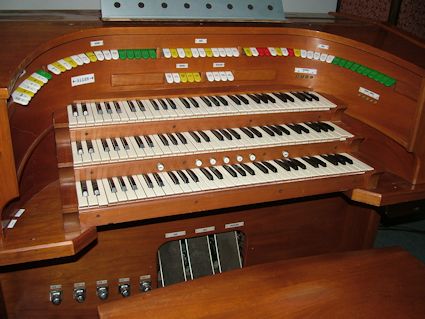
Blue Book says
·
2 61 -Key Manuals (this model has
even 3...)
·
32 Pedals
·
3 Tremolos
·
3 Vibratos
·
Chimes
·
Sustain
·
Attack
·
Repeat
·
External Speakers Gyrophonic Projector
·
Memory Pistons
This organ was build in 1962 and for me this was
a total different experience compared to the mainstream organs I saw before. The console is made of
massive wood, it weights about 200kg. It has wooden keyboards, and those huge
comb relays, which were also found in large pipe organs with electric tractures from the same era.
Allen started replacing vacuum tubes by germanium transistors in their models by 1959, keeping the basic circuits the same. Thus the sound is comparable to the earlier tube models from Allen (an exception is the solid state power amplifier).
The Tone Generators
Allen calls it a unit duplex organ. The oscillators are reused for several tabs and footages. It has three single tone tone generators each producing sine waves: Flute/Reed Generator, String- and Celeste-Generator. The reeds sounds are provided by an additional wave shaping circuit after each sine oscillator. And by the way, the reeds really sound great. One uniqueness: the so-called Hartley tone oscillators are silent when no key is played. When a key is pressed, the supply voltage is send over the keying/relay matrix to the appropriate oscillators and only they start making sound. RC filters at these individual power supply inputs result in a smooth attack phase of the waves.
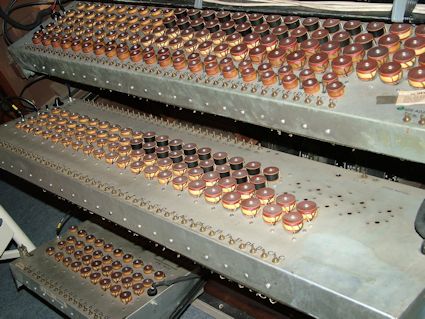
The three tone generators. The
discreet electronic parts are housed into solid metal cases. On top the
oscillator coils and individual potentiometers to adjust the volumes of each
tone. The cases can be turned around to access additional pots for tuning and
opening
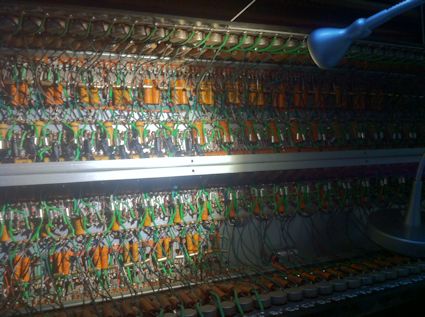
One tone generator opened.
Each oscillator has a tuning and volume potentiometer
The Comb Relays
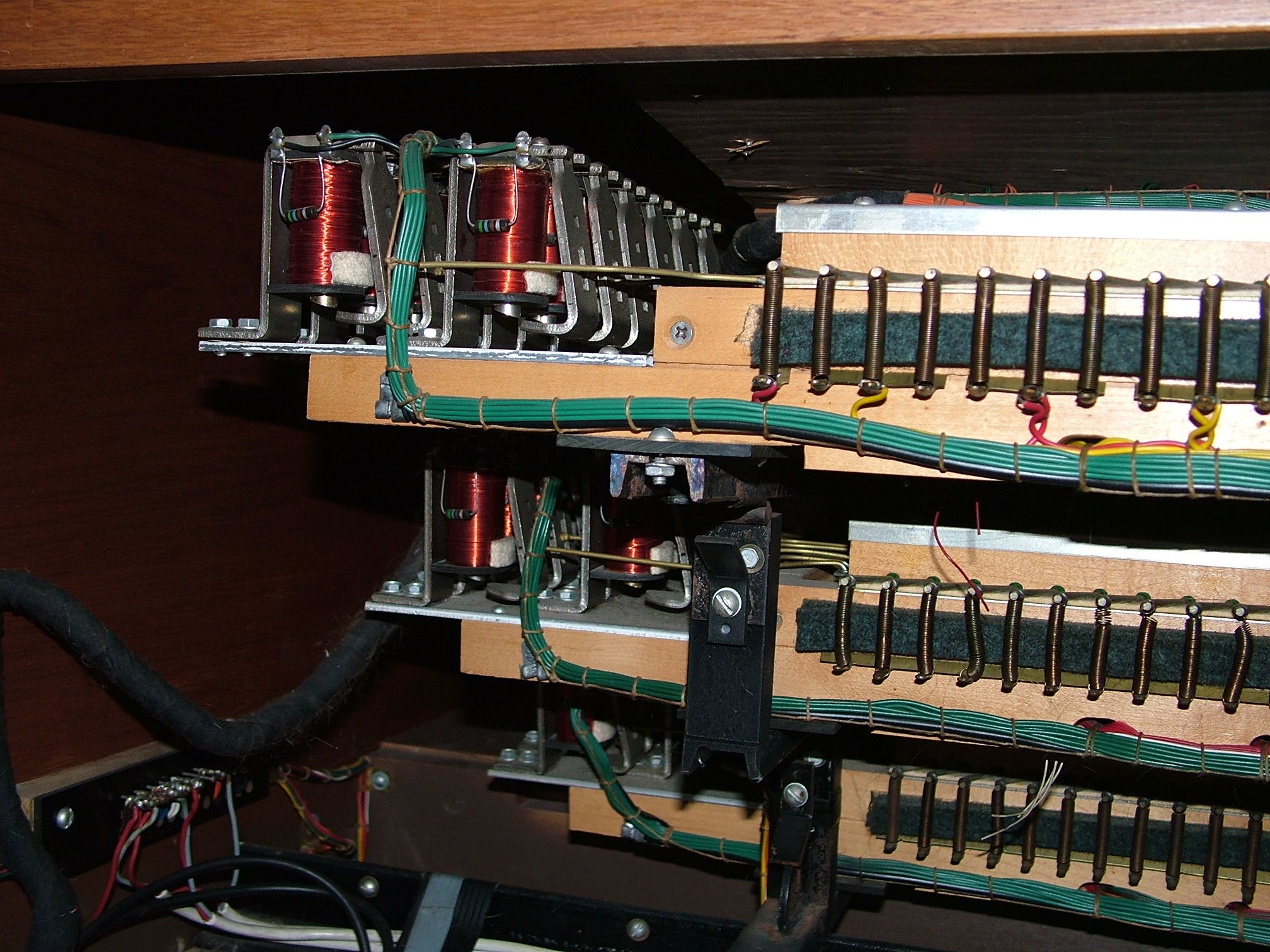
Back side
of the manual. Each
tab has its own coil which moves a key contact to the keying matrix behind
each key (12 per keyboard) and enables the addressing of the
matching oscillators.
Additive Synthesis! There
is a Clarinet tab. I was surprised not to hear an ordinary rectangle wave
sound. Instead, the clarinetish sound is synthesized
by adding several attenuated odd overtones on top to the sinus 8' tab. Nice. The Flute tabs are come up with real sinus sounds, but
without the spirit of the tone-wheel organs. A unique „Flutes become Tibia“-tab
adds an attenuated fifth footage by engaging another comb relay to the
flute which
brings more life.
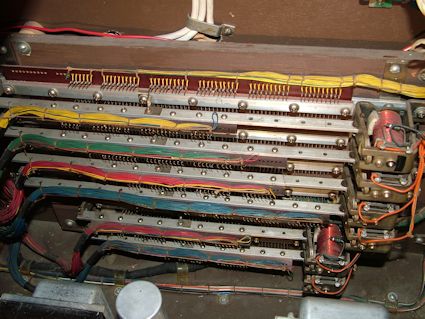
Comb relays
for each pedal tab
Bells and Sustain
There are also different
bell tabs like Glockenspiel that engage several footages together.
Some comb relays connect
electrolytic caps to the oscillator supply inputs, resulting in
sustain and chiff effects. This
is also the basis for percussive instruments like bells.
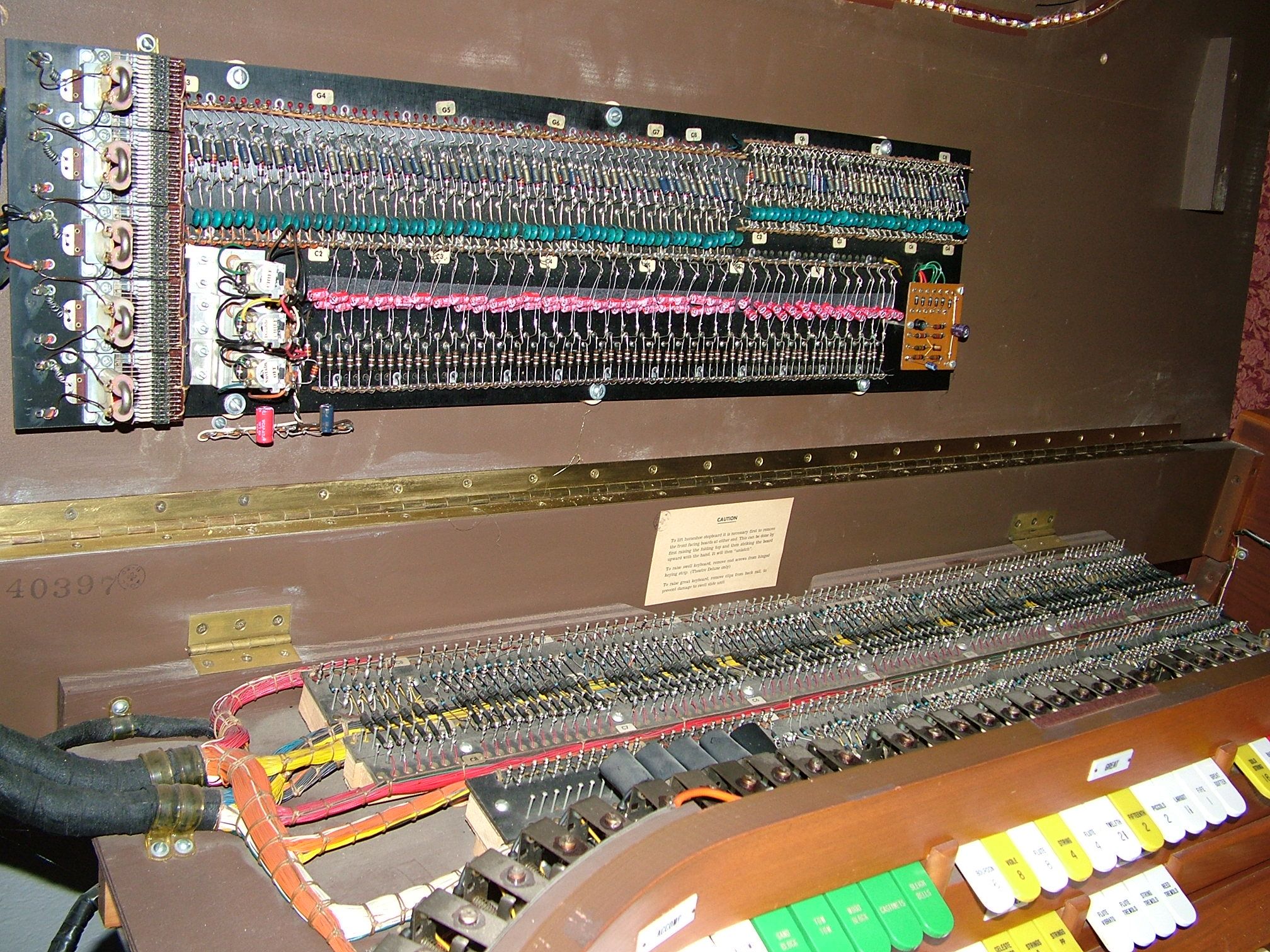
Circuit board on top: relays and caps for the sustain
circuit for flute voices on Solo Manual
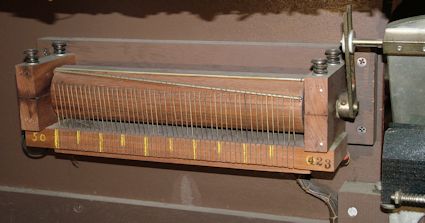
What's that? A Crescendo Roll – like in pipe organs!
Drums
A theatre organ needs drum
tabs, so did the developers at Allen think and integrated Taps Generators. The
organ sends the control signals to a separate speaker box, which includes the
drum circuits, amplifier and speakers.
Gyrophonic projectors
There are two extensive rotating speakers, an
invention by Allen and somehow different to the well-known Leslie principle. The
speakers are mounted on a spinning disk, thus the direction of the sound
remains always the same. The resulting effect is more subtle compared to a leslie.
Refurbishment
I had to exchange all electrolytic caps, as
they were in the power supply, the oscillators and the sustain unit. Some germanium
transistors had to be replaced, and some relays needed
cleaning with a glassfiber pencil. That was all for this 50 years old proud lady.
|
My personal ranking |
**** (4 Stars of 5) |
|
plus |
Impressing technology of 1962. Good trumped voices, strings. Complex sound by 3 Generators. almost noise free |
|
minus |
Heavy. Not so many possibilities compared
to a Rodgers |